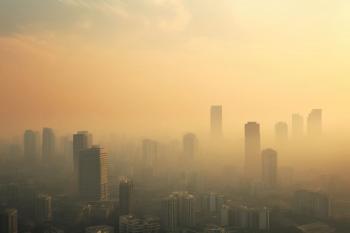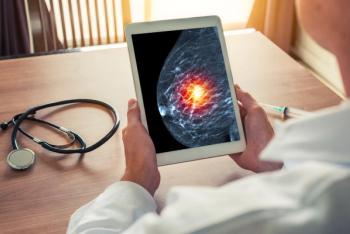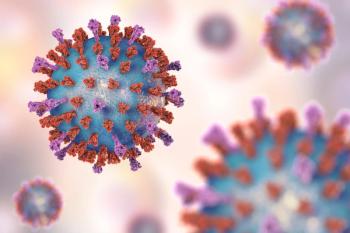
Childhood Cancer Survivors Face Increased Risk of Severe COVID-19
Key Takeaways
- Childhood cancer survivors have a higher risk of severe COVID-19 despite lower infection rates, especially during high transmission periods.
- The study analyzed a Nordic cohort, revealing increased vulnerability of cancer survivors even years after disease resolution.
Individuals who have survived childhood cancer had a higher risk of developing a severe COVID-19 infection, while exhibiting a lower risk of contracting the virus.
Adult childhood cancer survivors face a significantly heightened risk of developing severe COVID-19 compared with the general population despite having a lower COVID-19 infection rate, with more pronounced differences during periods of widespread SARS-CoV-2 transmission, according to study results published by investigators in The Lancet Regional Health.1
Are Childhood Cancer Survivors at Heightened COVID-19 Risk?
These results were garnered from an analysis of a Nordic register-based cohort, including 5-year childhood cancer survivors in Denmark and Sweden. The research gives pharmacists and health care providers new insights into the sustained vulnerability of cancer survivors, even many years following their disease resolution. Furthermore, the observed heightened differences reported during high transmission periods indicate the need for established strategies to protect vulnerable individuals during times of high infectious disease viral transmission.1
Research has previously suggested that childhood cancer survivors may be more vulnerable to COVID-19, but the evidence was generally inconclusive, requiring further research. Elucidating the risks that cancer survivors face due to their status is critical, given the steadily growing population of childhood cancer survivors and the increased susceptibility they harbor toward infectious diseases.1,2
The authors aimed to assess whether adult childhood cancer survivors harbored an increased risk of severe COVID-19 and registered COVID-19 infections compared with a matched comparison group from the general population and their siblings. By doing so, they could provide a more comprehensive assessment of the impact of the COVID-19 pandemic on older childhood cancer survivors while examining the influence of emerging COVID-19 variants, the authors wrote.1
Risk of Infection Was Reduced, But Survivors Faced Higher Risk of Severe Disease
Severe COVID-19 was defined by the investigators as any overnight hospitalization, admission to the intensive care unit, or death where the patient had a primary diagnosis of COVID-19. Patients were followed from January 2020 until December 2022. In total, the sample featured 13,659 childhood cancer survivors, of whom 10,906 had siblings, with 58,803 matched comparisons and 17,531 sibling comparisons. Through a baseline analysis, the authors found a higher proportion of severe COVID-19 (0.8%; n = 110) compared with the matched comparisons (0.4%; n = 240) and siblings (0.4%; n = 77). Contrastingly, registered COVID-19 infection was found more often among comparisons and siblings than childhood cancer survivors.1
Moving to cumulative hazard rates of severe COVID-19 and registered infection, the authors found similar hazard rates for severe COVID-19 between each group during the first months of the pandemic; however, at the beginning of 2021, the cumulative hazard rate of severe disease increased more in survivors than in comparisons. The difference became even more pronounced as the highly transmissible Omicron variant spread throughout the population. Continuing a notable trend, the cumulative hazard rate of registered COVID-19 infections was higher in matched comparisons than in childhood cancer survivors.1
Adjusted Cox proportional hazards regression models affirmed the higher risk of severe COVID-19 among childhood cancer survivors compared with their matched comparisons (adjusted hazard ratio [aHR] = 1.58 [95% CI, 1.25–1.98]). Specifically, a stratified analysis demonstrated a more pronounced risk increase in survivors 50 years or older at baseline, in Sweden, in survivors from solid tumors, and in survivors diagnosed with cancer when they were 15 years or older. Once again, childhood cancer survivors were found to have a lower risk of registered COVID-19 infection compared with their matched comparisons (aHR = 0.91 [95% CI, 0.89–0.94]).1
Investigator Insights and Implications For Future Public Health Crises
”It is important to understand that even though these individuals were not infected more often, the consequences were more serious when they did become ill,” Javier Louro, postdoctoral researcher at the Institute of Environmental Medicine at Karolinska Institutet and first author of the study, said in a news release accompanying the results of the trial.2
Based on the aHR, childhood cancer survivors had a 58% higher likelihood of developing severe COVID-19 when infected, despite having a lower risk of contracting the virus in the first place. One explanation provided by the authors for such a discrepancy is the increased precautions taken by cancer survivors to avoid infection, such as masking, avoiding large crowds, and staying up to date on COVID-19 booster vaccines. For individuals in this population, pharmacists are critical to counseling and educating them on their increased risk and steps they can take to ameliorate such risk.1,2
“Our results suggest that childhood cancer survivors should be considered a risk group in future pandemics or other health crises,” Louro stated. “This could involve prioritizing them for vaccination or offering special protection during periods of high transmission.”2
REFERENCES
1. Louro J, Kampitsi C, Mogensen H, et al. COVID-19 infection and severity among childhood cancer survivors in Denmark and Sweden: a register-based cohort study with matched population and sibling comparisons. The Lancet. 2025;55:101363. doi:10.1016/j.lanepe.2025.101363
2. Guilcher GMT, Rivard L, Huang JT, et al. Immune function in childhood cancer survivors: a Children's Oncology Group review. The Lancet. 2021;5(4):284-294. doi:10.1016/S2352-4642(20)30312-6
3. Karolinska Institutet. Adults who have survived childhood cancer are at increased risk of severe COVID-19. EurekAlert!. News Release. Released July 4, 2025. Accessed August 8, 2025. https://www.eurekalert.org/news-releases/1089692
Newsletter
Stay informed on drug updates, treatment guidelines, and pharmacy practice trends—subscribe to Pharmacy Times for weekly clinical insights.




